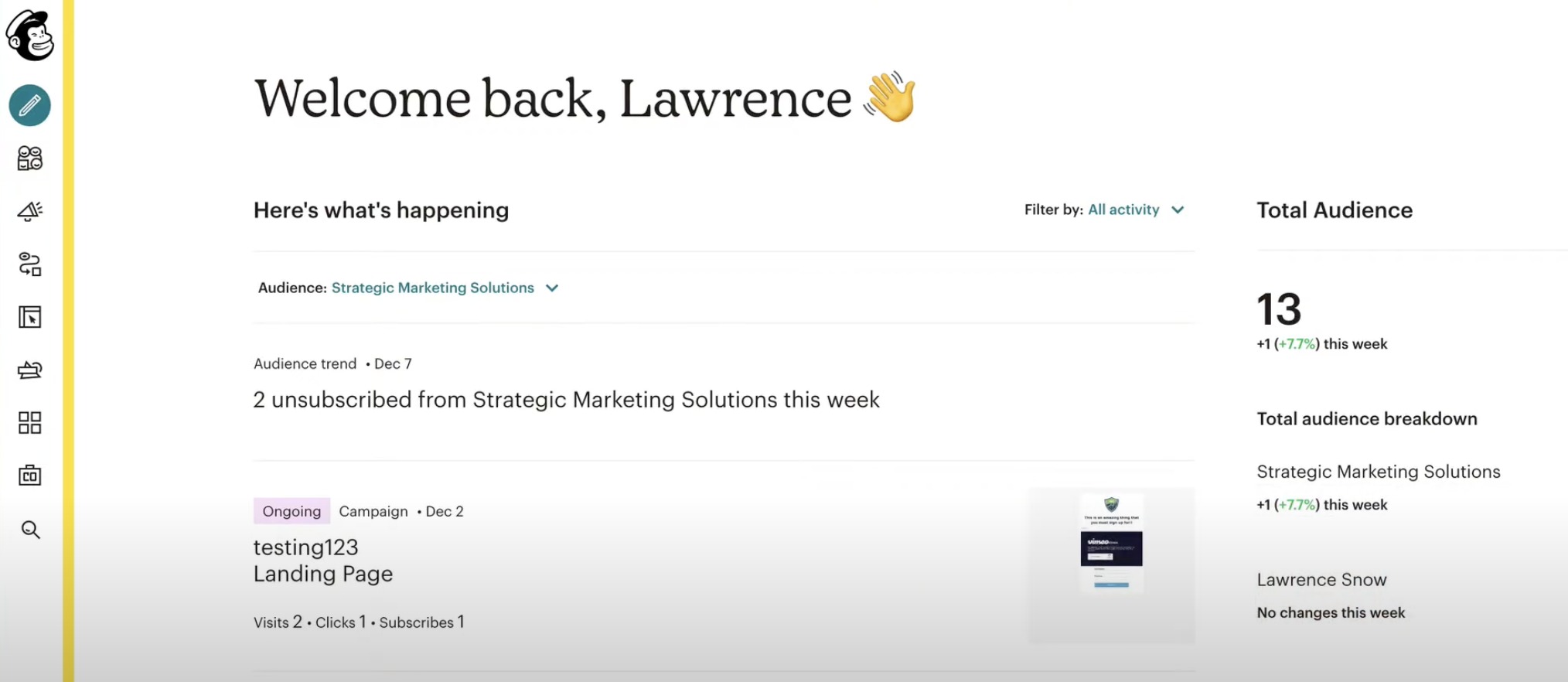Preparation for Migration
Step 1: Review Current Mailchimp Setup
Identify Key Assets: List all audiences, email campaigns, automation workflows, and forms that need to be migrated.
Document Design and Content: Take screenshots or notes of the design, content, and settings of each email and form to replicate them in the software.
Evaluate Data Volume: Assess the number of contacts and campaigns to be migrated.
Step 2: Define Migration Objectives
Set Clear Goals: Identify the reasons for migrating to the software, such as integrated CRM features, enhanced automation, or cost efficiency.
Prioritize Critical Features: Focus on migrating the most critical features first to minimize disruptions.
Step 3: Prepare Backup
Export Data from Mailchimp: Export all relevant data, including contact lists, email campaigns, and automation workflows.
Backup Data: Ensure all exported data is securely backed up before starting the migration process.
Migrate Contacts, Campaigns, and Automations
Step 1: Export Data from Mailchimp
Export Contacts: Navigate to Audience > All contacts in Mailchimp. Export your audience data by selecting the relevant contacts and downloading them as CSV files.
Export Email Campaigns: Access Campaigns > All Campaigns and export any reusable content or HTML templates.
Export Automations: Document the settings of existing automation workflows, including triggers, actions, and segments.
Step 2: Import Contacts into the software
Import Contacts: Navigate to Contacts > Import Contacts in the software and upload the CSV file(s) exported from Mailchimp.
Map Custom Fields: Map any custom fields to ensure that all data is correctly imported.

Migrate Forms and Landing Pages
Step 1: Recreate Forms in the software
Rebuild Forms: Use Sites > Forms in the software to recreate the forms from your previous system. Ensure that fields, validation rules, and submission actions match those used previously.
Embed Forms: Embed the recreated forms on your website or landing pages using the provided embed code.
Step 2: Recreate Landing Pages in the software
Rebuild Landing Pages: Navigate to Sites > Funnels in the software to recreate the landing pages you had in your previous system. Use the software’s templates or start from scratch to ensure the design matches your original pages.
Publish Landing Pages: Connect a custom domain if needed, and publish the landing pages to make them live.

Email Campaign and Automation Migration
Step 3: Recreate Email Campaigns in the software
Choose a Template: Navigate to Marketing > Emails > Templates in the software to select a suitable template or start from scratch.
Recreate Content: Copy the text, images, and links from your previous system’s emails into the software’s email builder. Ensure that the layout and design elements match the original campaigns.
Set Up Unsubscribe Links: Use the software’s built-in unsubscribe merge tags to comply with email regulations.
Step 4: Recreate Automations in the software
Rebuild Automation Workflows: Navigate to Automations > Workflows in the software to recreate your previous automations. Set up triggers, actions, and conditions to match the original workflows.
Use Pre-Built Recipes: Leverage the software’s workflow recipes if they match any of your existing automations to save time.

Setup Integrations
Step 1: Reconnect Integrations in the software
Re-establish Email Integrations: Navigate to Settings > Integrations in the software and reconnect any necessary third-party services (e.g., Zapier, social media platforms).
Set Up Payment Processing (if applicable): If you were using e-commerce features in your previous system, set up payment gateways in the software under Settings > Payments.
Step 2: Set Up Analytics
Enable Tracking: Use the software’s built-in analytics to monitor the performance of your email campaigns and landing pages.
Implement Third-Party Analytics (if needed): Re-implement any tracking codes (e.g., Google Analytics) that were used previously by navigating to Settings > Tracking.

Final Checks and Team Training
Step 1: Perform Final Data Validation
Cross-Check Data: Verify that all contacts, email campaigns, and automation workflows have been successfully migrated and are functioning correctly in the software.
Test Email Campaigns: Ensure that emails are being sent correctly, including all personalization tags and unsubscribe links.
Step 2: Train Team Members
Training: Provide training to your team on how to use the software’s email builder, workflows, and CRM features.
Leverage Support Resources: Encourage your team to use the software’s support and documentation for ongoing learning and troubleshooting.
Step 3: Monitor and Optimize
Monitor Performance: Regularly check the performance of your campaigns and workflows in the software, making any necessary adjustments.
Continuous Improvement: Stay updated with the software’s new features and updates to continually improve your setup.

Decommissioning your previous system
Step 1: Transition Period
Run in Parallel: Consider running both your previous system and the software in parallel for a short period to ensure a smooth transition.
Gradual Phase-Out: Gradually phase out your previous system as you gain confidence in the software’s capabilities.
Step 2: Cancel Subscription
Final Data Backup: Ensure that all necessary data has been securely backed up before canceling your previous system subscription.
Official Cancellation: Follow your previous system’s process to cancel your subscription and terminate any associated services.
Step 3: Post-Migration Review
Review Success: Evaluate the success of the migration, documenting any challenges and solutions.
Ongoing Monitoring: Keep an eye on your software setup post-migration to catch and resolve any issues promptly.

Was this article helpful?
That’s Great!
Thank you for your feedback
Sorry! We couldn't be helpful
Thank you for your feedback
Feedback sent
We appreciate your effort and will try to fix the article